Anyone looking at diamond jewellery online quickly uncovers a minefield of different terms – Natural Diamonds, Lab Diamonds, Moissanites… what on Earth is the difference between them!? Lab diamonds and Moissanite cost much less than natural diamonds, but there must be a catch – what are the downsides?
In this article, you will learn the pros and cons of each gemstone so you can unpick which is right for you.
Before we begin, I want to highlight a subtle but crucial difference in language that separates lab-grown diamonds from Moissanite:
- Synthetic diamond – lab-grown diamond
- Diamond simulant – Moissanite
This subtle difference adds to the confusion!
Direct Comparison
Side by side, here are the basics, based on the following:
- Brilliant cut (round shaped)
- 1ct (approximately 6.5mm in diameter)
- F (high colour rated)
- VS (excellent clarity)
Natural Diamond
1ct F VS2
£8,085
10 on the Mohs scale of hardness
Displays both brilliance and fire
Mined from the Earth.
Lab-Diamond
1ct F VS2
£3645
10 on the Mohs scale of hardness
Displays both brilliance and fire
Created in a lab but identical in every way to a natural diamond, apart from its age – the conditions under which it is formed are the same, but much faster and in controlled conditions.
Moissanite
6.5mm, DEF colour, IF-VS1
£300
9.25 on the Mohs scale of hardness
Displays both brilliance and fire
Moissanite is a naturally occuring gemstone, but only exists in tiny amounts. Commercial Moissanite used in jewellery is lab created, but identical to natural Moissanite.
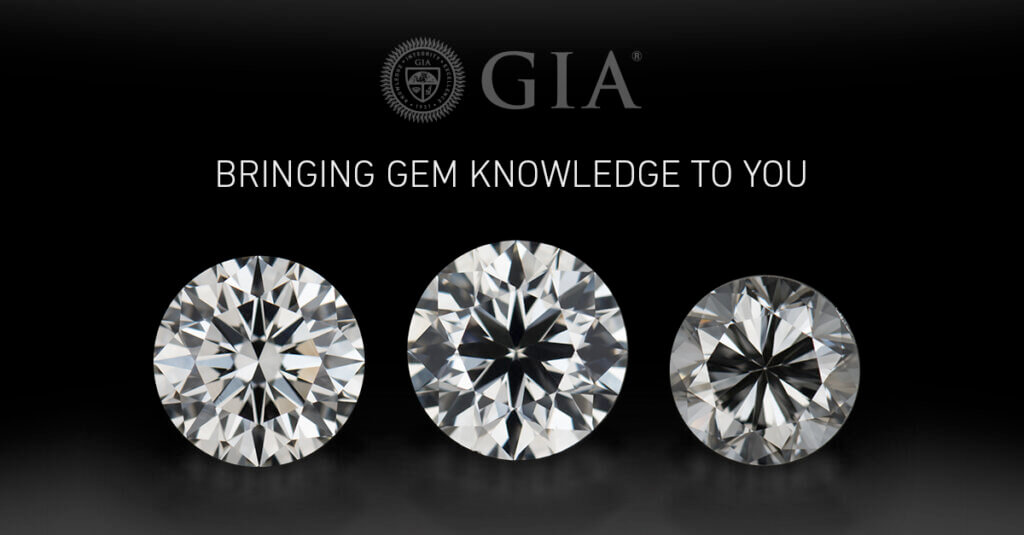
Natural Diamonds
Let’s start with the more commonly known and understood of the three.
What are they?
Natural diamonds are an absolute wonder of nature, one of the world’s most precious and beautiful products. Diamond is the only natural gemstone composed of a single element – carbon. Most diamonds formed more than a billion years ago, deep in the Earth’s mantle.
How are Natural Diamonds made?
Around 90 to 150 miles deep in the Earth’s mantle, pure carbon particles are exposed to intense heat and pressure over millions of years. The carbon particles crystalise, and these diamond crystals are transported to the Earth’s surface through volcanic explosions. Man lends a hand at this stage to sort through the raw stones to find those good enough for use in jewellery (the vast minority), analyse them to work out the best way to divide the crystal up to achieve the best results, and cut and polish them into the stunning stones we know and love.
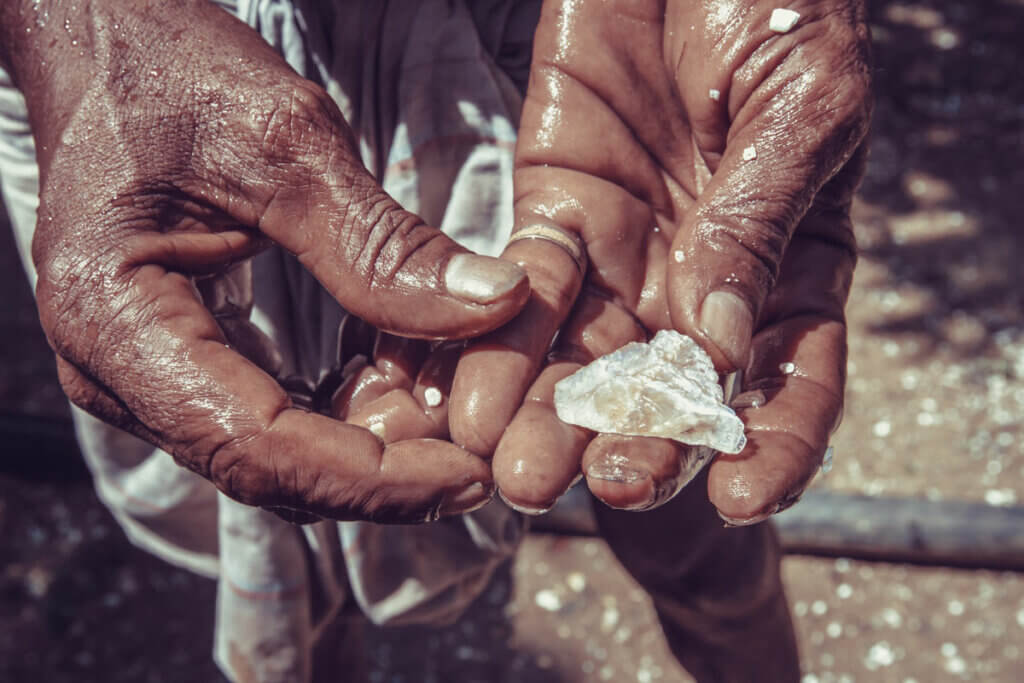
Mohs scale of hardness
Diamonds have a Mohs Scale of 10, making them the hardest mineral on the planet. The gap in hardness between 10 and 9 on the scale is significant – plotted on a line graph, it is not a straight line decrease in hardness as you move down the scale, making diamonds’ hardness very special.
A large part of a diamond’s appeal is, in fact, its hardness – the longevity and durability make it the ideal stone for all types of jewellery, including rings that suffer all of life’s knocks. That being said, it is still possible to chip a diamond! They are not indestructible.
Look
A diamond’s distinctive optical and physical properties give it the highest possible lustre of any gemstone. The dispersion of white light into spectral colours is the primary characteristic of diamonds – the fire and sparkle, flashes of colour and light that reflect and bounce out of a well-cut diamond is what makes them so special and widely adored. Diamonds display both brilliant (white flashes) and fire (coloured flashes).
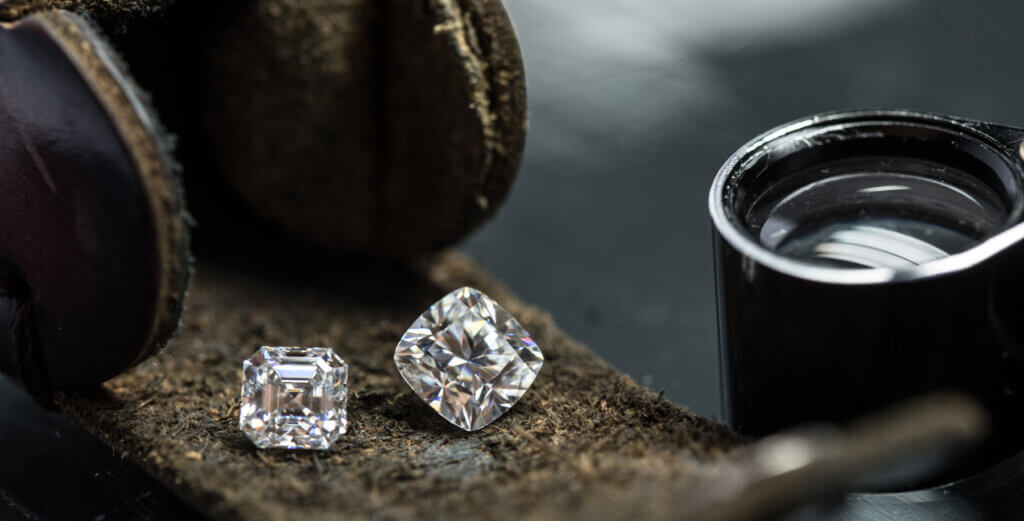
Value
One of the most valuable gemstones, the sky is the limit when it comes to the cost of diamonds. The larger, whiter, and clearer a diamond is, the more valuable it is. Larger stones come at a premium due to their rarity.
Why are natural diamonds so expensive?
When diamonds are technically the most commonly found gemstone in the world (yes, really! But the vast majority found are not suitable for polishing for jewellery), why are they so expensive?
Two key reasons: monopoly and propaganda.
Buckle in for a quick history lesson! Turn back the clock two hundred years, and diamonds were reserved for royalty and the very wealthy. They were truly rare until 1870 when miners discovered vast deposits of diamond in South Africa, and suddenly the previously tiny diamond market flooded. Diamonds became not only common but relatively cheap.
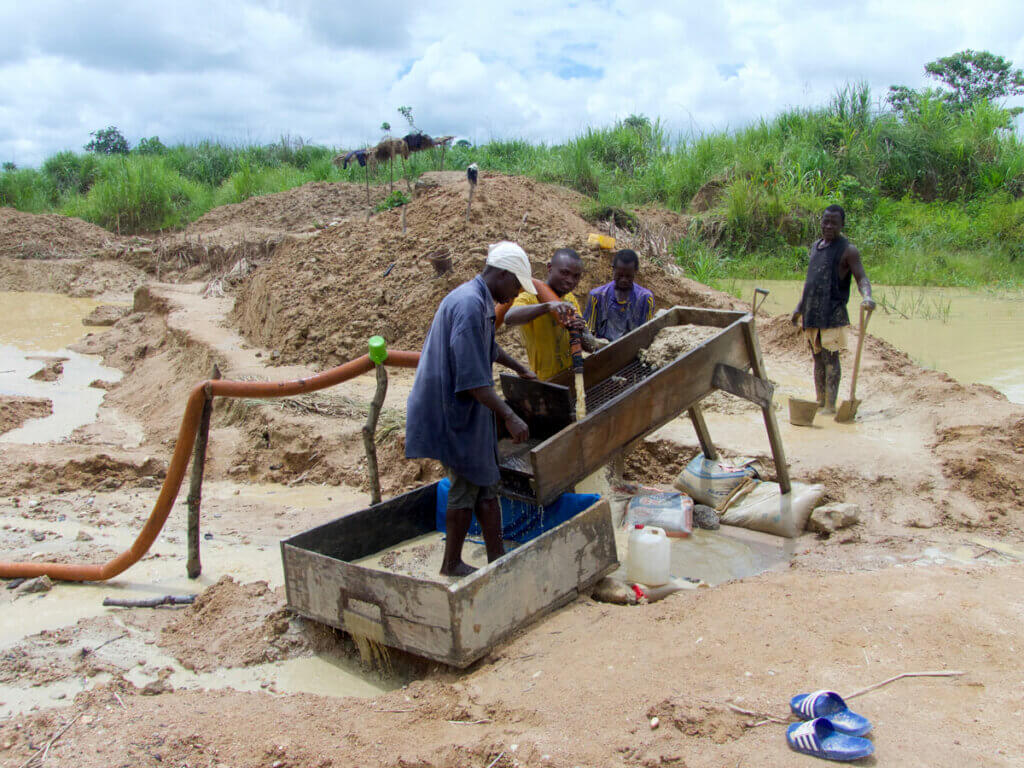
This wasn’t to last. Cecil Rhodes started buying up shares of the diamond mines, and within 18 years, he controlled the entire South African supply of diamonds. The former farm owners where his empire began were the De Beers – a name you may well recognise! Over several decades of mercenary business practices, Rhodes created a monopoly, buying up all competition who got in his way.
In 1929, The Depression hit, and with it, diamond and jewellery sales plummeted. De Beers wound up with a vast stock of diamonds but very little demand. A new marketing angle was required, and they decided to aim straight for the heart and launched arguably the most successful advertising in American history.
De Beers lent large diamonds to celebrities and socialities, ensuring the stones would be mentioned in the press by writing their own newspaper and magazine columns. In 1948, copywriter Frances Gerety struck gold with the phrase, “a diamond is forever.” The phrase positioned diamonds as the most romantic metaphor for eternal love. Immediately, sales of diamonds soared, and the propaganda continued and evolved.

By the 1980s, ads were saying, “isn’t two months’ salary a small price to pay for something that lasts forever?” Like the ‘tradition’ of a diamond engagement ring, the concept of a man spending two or even three months’ salary on a diamond comes straight from those selling them.
De Beers relinquished its monopoly on the diamond market in 2000, but the price of diamonds remains inflated due to suppliers stockpiling the gemstone.
Why choose natural diamonds?
Since De Beers’ advertising campaigns in the early 20th century, diamonds have become the classic choice. But did you know that engagement or betrothal rings often featured coloured gemstones before diamonds became the norm?
Aside from the marketing by De Beers, the rise in diamond engagement rings also coincides with marriages becoming less about business agreements between families and more about romantic unions. There is something incredibly romantic about an engagement ring being set with a gemstone formed over millennia in the depths of the Earth. With each diamond comes millions of years of history. Every imperfection is part of its story, and each stone is unique, representing the nuances and uniqueness of your personal love story. The toughest mineral on the planet? Quite the romantic metaphor for a meaningful piece of jewellery.
Things to consider
Ethical issues are always a key factor when considering other options for natural diamonds. Truthfully, purchase a diamond from a reputable supplier, and you can feel good about your purchase. The Kimberley Process was devised to eliminate the flow of conflict diamonds, and to stop buying natural diamonds altogether would decimate the livelihoods of 10 million people globally. Over 99% of the world’s mined diamonds are now conflict-free.
Botswana, for example, has been completely transformed thanks to its diamond industry. As a result of diamond mining, every child today gets free education until the age of 13. Today, the country has 300 secondary schools, compared to just three in 1966. The diamond industry also supports critical infrastructure spending: in 1966, Botswana had six miles of paved roads; today, there are 7,000 miles.
It is also worth knowing that natural diamonds retain their value and can even increase in value depending on the market and their increasing rarity.
Lab Diamonds
What are lab diamonds?
Laboratory-grown diamonds have the same chemical, optical, and physical properties as natural diamonds. Like natural diamonds, they are made of tightly-bonded carbon atoms; lab diamonds respond to light in the same way and are just as hard as natural diamonds. The only way to tell them apart is to use specialist equipment.
The critical difference between laboratory-grown and natural diamonds lies in their origin (and, conversely, their price). Ice is a great way to explain the difference between lab-grown and natural diamonds. Think of laboratory-grown diamonds as ice from your freezer, while natural diamonds are ice from a glacier. They are both ice – intrinsically the same, although their formation and the age of each are very different.
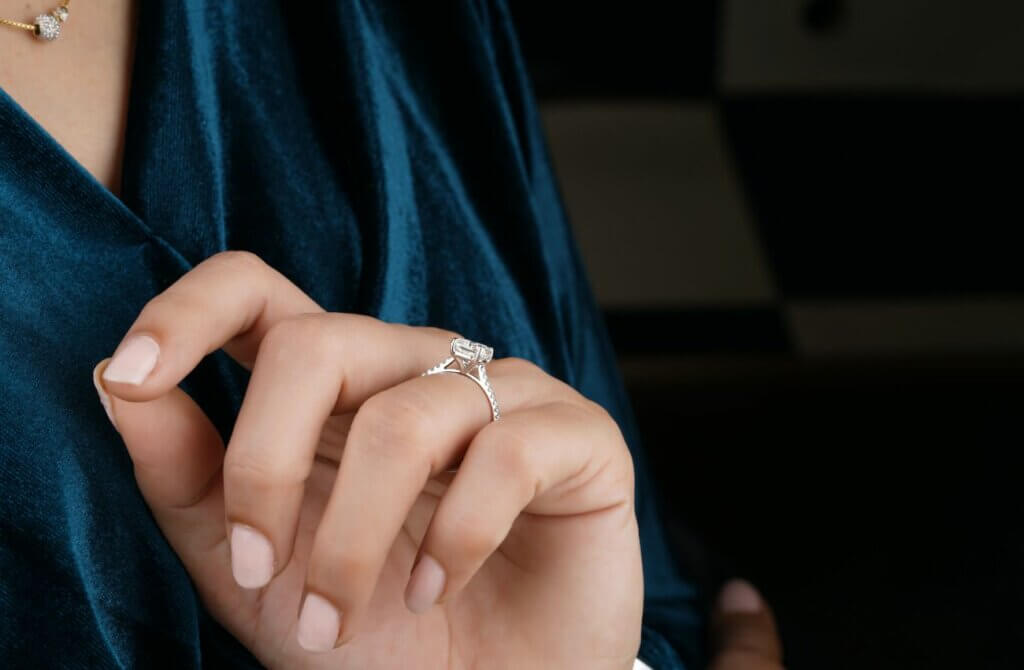
How are Lab Diamonds made?
Lab diamonds are usually grown using a high-pressure, high-temperature (HPHT) method. Scientists at General Electric designed the first HPHT method in 1954 to mimic diamond growth deep below the Earth’s surface, and the process has been perfected and streamlined over the last 70 years.
Here is a summary of the process involved in making a diamond in a lab:
- Sow the seed – The HPHT process begins with a tiny diamond fragment known as a seed crystal*. The seed is placed inside a press with a metal catalyst, such as nickel or iron. A block of pure carbon, such as graphite, sits on top. *The “seed’ is a starter “crystal” from which a synthetic diamond grows. It does not have to be a diamond, but it does have to be carbon in origin. Some commercial companies take ashes and produce synthetic diamonds from them. Essentially, diamonds are formed from carbon and require a carbon starter to grow.
- Apply pressure – The press heats the cell to 1600°C and uses metal anvils to apply intense pressure. The pressure and temperature needed to be high enough to melt the metal catalyst. This stage replicates the pressure under which natural diamonds form over thousands of years, but in the space of a few weeks instead!
- Atoms collide – The molten metal carries carbon atoms from the graphite to the seed crystal. The carbon atoms slowly build up around the crystal to create a multi-sided structure. The growth rate is carefully controlled to ensure a high-quality, fault-free diamond crystal.
- Cut and polish – After the diamond has been cooled, it is ready to be cut and polished, just like a natural diamond. It can then be graded for cut, colour, carat, and clarity using the same guidelines and certification as a natural diamond.
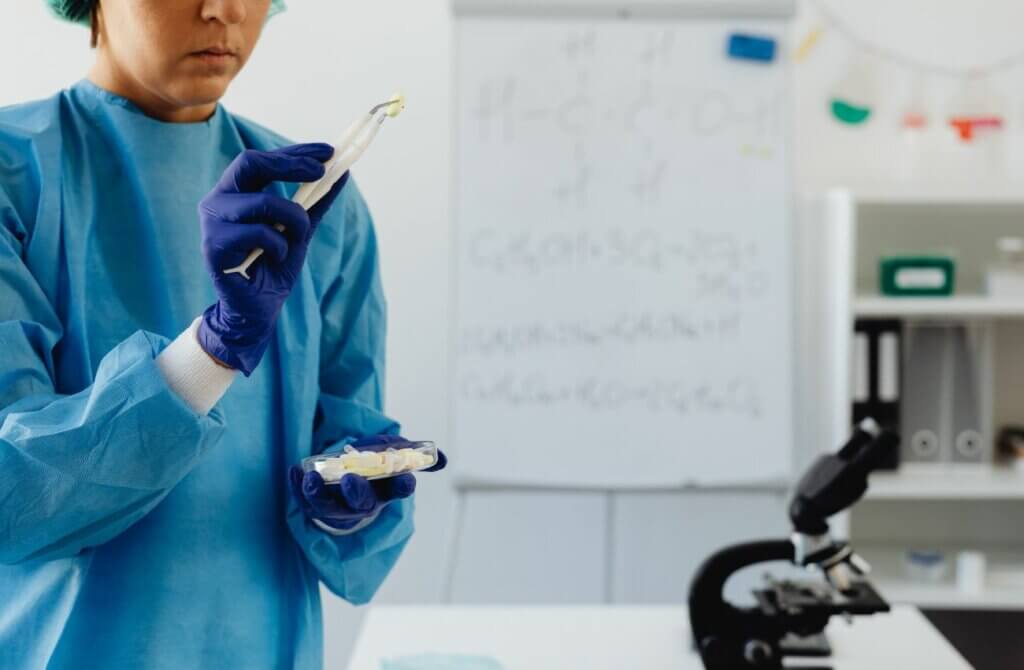
Mohs scale of hardness
Lab diamonds (sometimes known as synthetic diamonds) have the exact same level of hardness as natural diamonds (10 on the Mohs scale of hardness), making them the hardest mineral on the planet.
Look
Laboratory-grown diamonds have the same chemical, optical, and physical properties as natural diamonds. So much so that identifying lab diamonds can be a challenge.
How do you identify a synthetic diamond?
Only a gemological lab with advanced testing equipment can conclusively determine whether a diamond is natural or synthetic. Metallic inclusions can indicate that a diamond has been lab-grown using the HPHT method, but these will only be seen under extreme magnification.
The GIA laboratory issues different reports for natural versus lab-grown diamonds to protect the consumer and prevent confusion. However, the standards used to grade each type of diamond are the same. Each Laboratory-Grown Diamond Report provides a complete assessment of the 4Cs of diamond quality and includes a report number that has been laser inscribed onto the girdle of the synthetic diamond. Besides its grading report number, the synthetic diamond is inscribed with the words “laboratory-grown.”
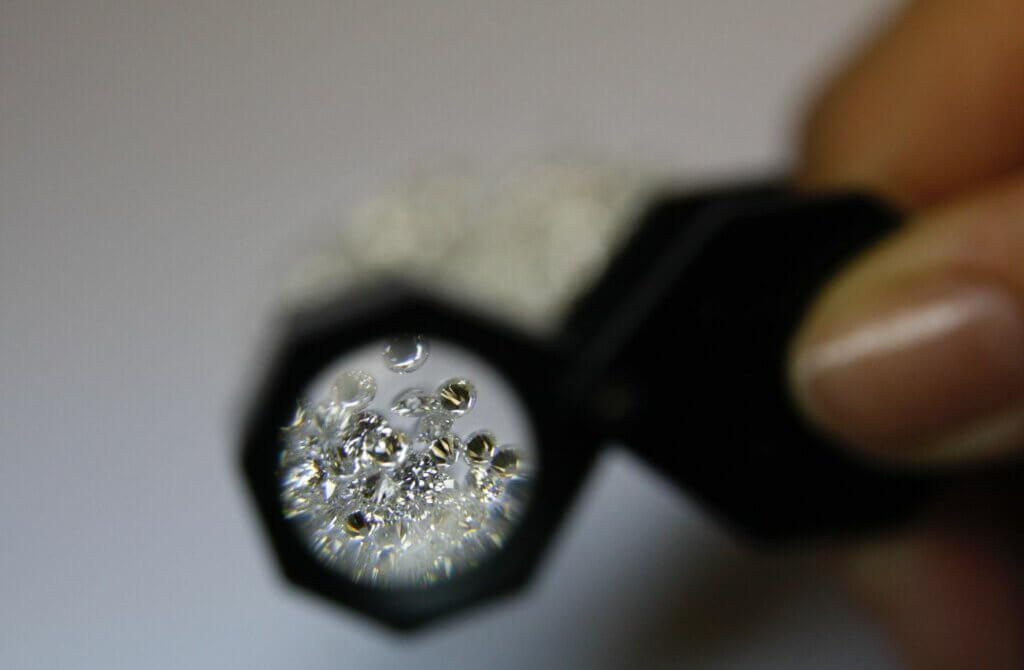
Value
Cost-wise, lab diamonds are much more budget-friendly. A synthetic diamond’s price will currently be between 60% to 80% less than a natural diamond of the same size and quality.
There are two reasons for this:
- Firstly, the demand for lab-created diamond rings is still considerably less than for mined diamonds.
- Secondly, their future value has yet to be discovered. It is still being determined whether lab-grown diamonds will have resale values comparable to natural diamonds, which understandably causes some uncertainty for consumers. These doubts keep the global cost of lab-grown diamonds suppressed. Some jewellers refuse to sell them, but as awareness of their ethical credentials increases, I am sure the demand and availability will rise also.
Why choose lab diamonds
Laboratory-grown diamonds are less expensive and guarantee to be ethical with more sustainable origins.
Things to consider
Synthetic diamonds are just as sparkly and durable as natural diamonds and can be bought at a lower price. But if considering the intrinsic, financial value of your diamond jewellery long term, there is a question mark over lab diamonds, which must be considered when deciding between lab and natural diamonds.
Whether something made in a lab is as romantic as nature’s produce is an entirely personal decision.
I have to question the environmental impact of lab-created diamonds. While consumers might think lab-created diamonds are an excellent environmental alternative to natural diamonds, they require significant energy to fuel the machines growing them. Since lab-created companies use the eco-friendly label, it is down to them to provide appropriate evidence that they are, in-fact, ecologically sound.
Moissanite
What is Moissanite?
Moissanite, or simulated diamond, is a popular and affordable diamond alternative. Naturally-occurring Moissanite is incredibly rare – first discovered by chemist Dr. Henri Moissan in 1893 in a crater from a meteorite strike in Arizona. It has since been found in extremely small crystals in a few deposits worldwide. Therefore, all Moissanite used in jewellery is lab-grown.
Moissanite is made by combining silicon and carbon under immense amounts of heat and pressure to create silicon carbide crystals, also called ‘preforms’. These are then sent to be faceted for the utmost brilliance and cut to standard, calibrated shapes and sizes.
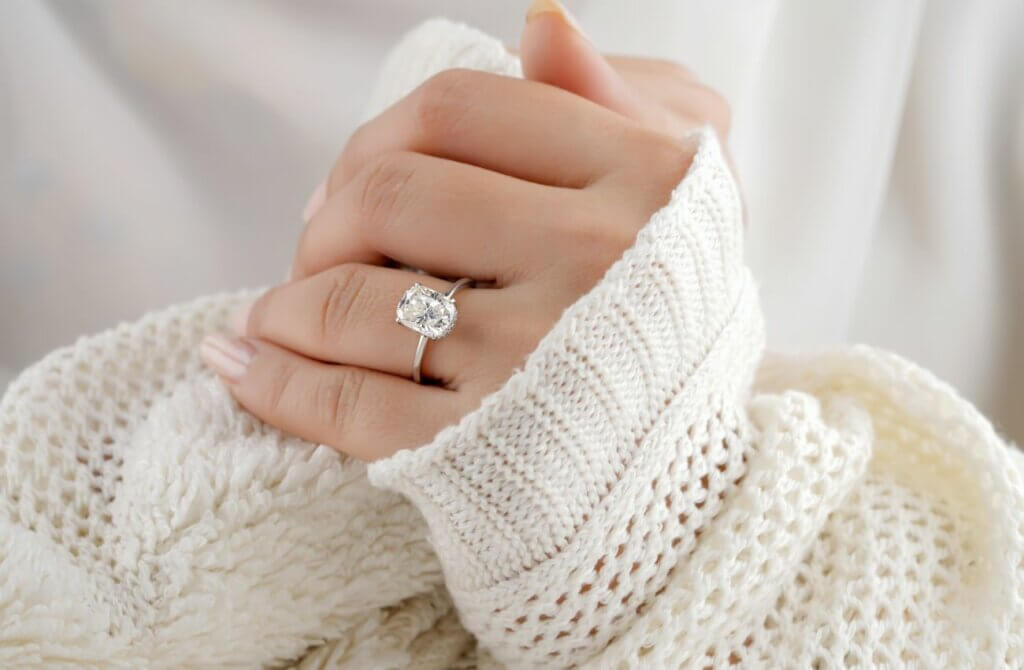
Mohs scale of hardness
Moissanite ranks close to diamonds on the Mohs scale of hardness at 9.25, therefore making it a suitable choice for daily wear in jewellery such as rings. Thanks to this gemstone’s remarkable hardness, you will not need to worry about it like a softer stone such as emeralds, which are just a 7.50 on the hardness scale.
Look
Moissanite is an excellent diamond simulant. To the untrained eye, they look almost identical. Side by side, Moissanite actually has even more fire than natural diamonds. Therefore, Moissanite tends to have more coloured flashes of light than diamond. This is because a moissanite has a higher refractive index than a diamond and is a double-refractive gemstone, which results in a more sparkly gemstone.
This depends partly on the cut of the stone – diamonds with older cut styles or modern cuts with certain angles will show more fire than most modern diamonds. This can make it difficult to distinguish between Moissanite and natural diamonds.
Distinguishing Moissanite and diamonds based on brilliance and fire isn’t reliable, but it is easier to see at larger sizes. The majority of Moissanite pass on a standard diamond tester – you need a specific tester to distinguish between Moissanite and diamonds.
Value
Moissanite has similar optical properties to natural and lab-grown diamonds but is a better fit for a tighter budget. For the same size from the top view, Moissanite are dramatically lower in pricing than diamonds of equal size. Moissanite gems typically vary in price only based on size and colour.
In terms of holding value, Moissanite is superior to lab-grown diamonds when comparing percentage value retention. Moisannite is also longer established as an alternative to natural diamonds, and supply is steady.
Why choose Moissanite
Moissanite is lab created with minimal environmental impact.
Moissanite gemstones are a 9.25 on the Mohs Scale of Hardness, so they are suitable for everyday wear.
You will get a much larger stone for your money, and if you love sparkle, Moissanite is the stone for you!
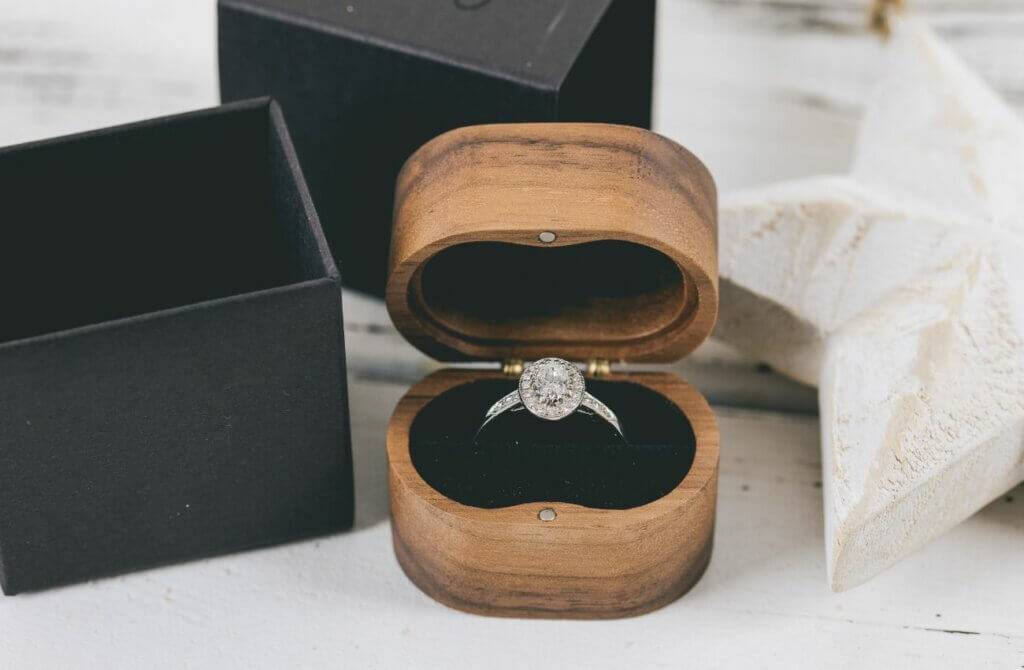
Things to consider
You might notice a hazy appearance on a moissanite gemstone over time. This haze doesn’t come off with a simple cleaning like most gemstones. Unlike lab-grown diamonds, moissanites require a polishing cloth. Charles & Colvard (the most highly regarded moissanite producer) recommend their Sunshine polishing cloths to keep the stone clear and sparkling to the max.
Moissanite doesn’t have a standard grading system like the 4Cs of diamond quality used to assess both natural and lab-grown diamonds. Instead, moissanite gemstones go by quality. Moissanites are usually described as Premium or Super Premium, which relates to the whiteness of the stone. The price of a moissanite ring mainly depends on the quality and the size.
Natural diamond, Lab-grown diamond, or Moissanite – which is best?
When it comes to engagement rings, Moissanite, lab-grown or natural diamonds are fantastic options. All three gemstones come in colourless design and near-colourless qualities, and can be fancy coloured as well. Ask a hundred different jewellers which is best, and you will get a hundred different answers based on their personal values and their understanding of the pros and cons of each stone. The decision you make will come down to four things:
- Budget
- The heirloom factor
- Natural vs. man-made
- The sparkle factor
Budget
If size matters, you will get at least 20% more stone for your money by opting for a lab-grown diamond compared to a natural diamond. You will get an even bigger stone for the same money by choosing a moissanite.
The Heirloom Factor
Neither moissanite nor lab-grown diamonds hold their value as strongly as a natural diamond, but Moissanite is more likely to keep its value. However, consider both of these stones in terms of their sentimental rather than monetary value, especially regarding jewellery such as an engagement ring.
Natural Vs. Man-made
Does the idea of a diamond formed over millennia in the depths of the earth sound more romantic than a lab-grown diamond or simulant diamond? Ultimately, man has the final impact on how a stone looks when cut, regardless of how it is formed.
When considering the ethical and ecological credentials of each gemstone, they all have pros and cons. Now that diamond mining is tightly regulated, mining communities (mainly in the third world) benefit hugely from the industry, but this does come with a large carbon footprint for western consumers. Lab-grown diamonds claim to be the ethical choice, but their production reduces the market for natural diamonds which supports mining communities, and there are question marks over how ‘green’ the production methods actually are.
In terms of durability, there is very little between Moissanite and diamonds, whether natural or lab-grown, so there is no real benefit in choosing one over the other.
The Sparkle Factor
Natural diamonds, lab-grown diamonds and moissanites all exude a great deal of brilliance and fire, but Moissanite takes top place in the sparkle factor with its double refractive index. This intense scintillation is too much for some, but others love the fire that only a moissanite can bring.

Which is right for you?
Whichever ring stone you choose, you should always choose the stone and design that fits your lifestyle and budget, because either one would make a gorgeous engagement ring! Especially when purchasing something as special as an engagement ring, the cost should hurt a little (no need for the ‘traditional’ two or three months’ salary that De Beers encouraged!), but I am a strong believer in not going into massive debt for a piece of jewellery. Stick within your means and make the right choice for you.
Take a look at my galleries and filter to diamond or Moissanite to see examples of projects I have designed with each type of stone.
I’d love to hear your thoughts on this interesting topic in the comments below – have I missed anything out of my comparison?
Looking to design a bespoke engagement ring? Find out more about the process with me, here.

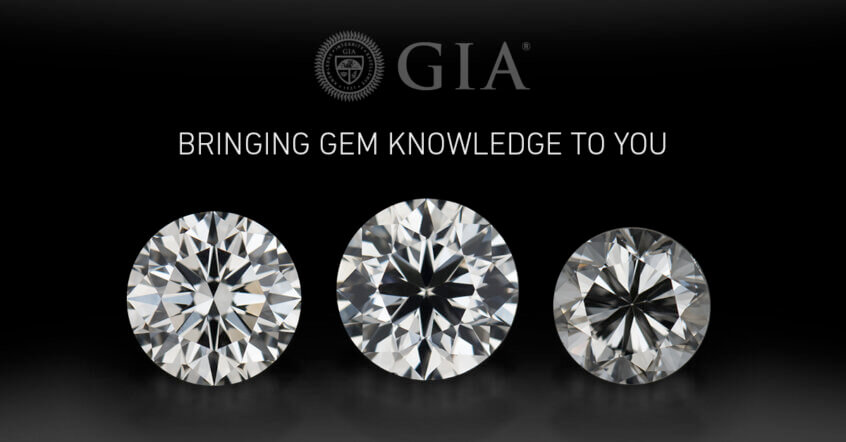
6 Comments on “Natural diamond, Lab-grown diamond, or Moissanite – which is best?”
Why is it so hard to find mens rings made of moissanite that have nice stones with really good carat weight? I purchased a very nice ring for my wife and she loves it. I would like to purchase a nice gold mans ring with some quality cut stones. Something masculine with eye catching appeal.
Hi Randy, well you have come to the right place! Send me an email and maybe we can design you the perfect moissanite ring.
[email protected]
Super helpful!!
I’m so pleased you found it helpful 🙂
Complete, Concise, Clear, Captivating!
You get your own set of the 4C’s! 😊
Thank You Sooooooo Much!💗💚
Best. Comment. EVER. Haha! Thank you so much, I am really glad you enjoyed the article and found it helpful 🙂